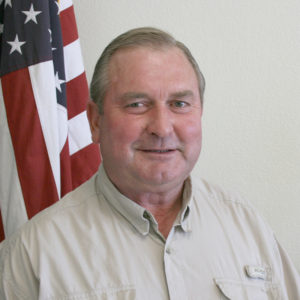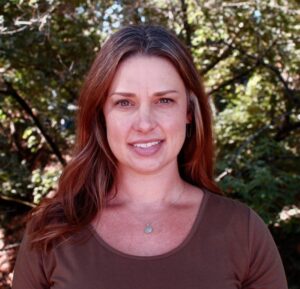Fire Mitigation and Post-Fire Recovery



Post-Fire Recovery
Working closely with our federal partner, the USDA Natural Resources Conservation Service, the RCD offers post-fire recovery services and support to our community in times of need. We provide on-site technical assistance to assess post-fire property conditions and make recommendations concerning potential harmful debris runoff, erosion and drainage issues, stream impacts, tree health, winter preparedness, private road and culvert damage or direct you to other local partners with this expertise. We can also provide permit assistance for post-recovery actions and help agricultural and forest landowners find and navigate potential funding resources to reduce the cost burden making repairs and protecting our watersheds. See the After the Fire Services for other ways we can help and how to contact our team.

Community Wildfire and Forestland Resiliency
Sonoma County like many California counties is annually threatened by catastrophic wildfire, particularly in the wildland-urban interface (WUI). Our local topography, fuels, and Mediterranean climate make our County subject to periodic wildfires. Combined with 100 years of effective fire suppression across the state, these conditions have led to uncharacteristically high fuel loads which has resulted in several devastating wildfires recently impacting our community.
Fire is an essential ecological process in fire-dependent ecosystems, such as California wildlands. However, over a century of fire suppression has led to wildlands, woodlands and rangelands that are unable to withstand normal droughts, insect outbreaks or wildfires. The purpose of any fuels reduction project is to change the size and composition of the fuels in the forest, creating a break in fuel continuity. Doing so removes ladder fuels which can carry fire from the forest floor to the tree crowns where it can become a devastating fire that quickly spreads. The goal of fuels reduction is to create conditions that mimic the role of low intensity fire or other disturbances that once naturally thinned the forest.
The RCD has a long history of collaborating with local community and agency stakeholders to provide county residents with educational, science-based solutions, and cost share assistance. Our growing partnerships with federal, state and local partners support county and regional efforts that aim to aid forest landowners implement non-commercial forest improvement activities such as thinning, planting, pruning, and fuel hazard reduction to mitigate wildfire risk and improve forest health in this highly fire-prone region. Currently, we are seeking applications for the North Bay Forest Improvement Program.
Prevention Resources for Homeowners and Landowners
Fire Prevention and Resiliency
- Fire Safe Sonoma
- Planning and Permitting Forest Fuel-Reduction Projects on Private Lands in California
- Wildfire Fuel Mapper – Maps, resources, and information to help Sonoma County residents and land managers reduce fire fuel hazard.
- CAL FIRE Fuels Reduction Guide 2021
- Wildland Fire Preparedness Farmers Ranchers
- Fire Safe Sonoma’s “Ready, Set, Go!” personal wildland fire action guide (English PDF) (Spanish PDF)
- Tahoe RCD Wildfire Home Retrofit Guide
After Fire Services

The RCD is here to provide support to those impacted by wildfires in our community. If you have natural resources concerns on your fire-impacted property, please contact us at info@sonomarcd.org. The RCD is offering these current services related to fire recovery and resiliency in our impacted watersheds:
- Technical assistance information and site visits to determine resource needs and appropriate actions concerning erosion, riparian areas, forest management, etc.
- Information and resources will be sent out in our eNews,
- Connecting landowners with funding resources available for post-fire natural resource protection,
- Natural resource permit assistance on a fee for service basis.
- Watch our Post-Fire Considerations for Landowners: Zoom Q&A Session (11/17/2020)
In addition to our work with individual landowners, we are engaged with the Watershed Task Force, supporting efforts to assess watershed damage and needs, secure funding, and outreach to the community. For more information on the Watershed Task Force, and the Watershed Emergency Response Team formed through CalFire, check out this press release. We are here for you and are ready to work side by side with you as our community recovers together.
Fire Recovery Downloadable Resources
Quick reference resources
- Post Fire Top Ten Things to Consider (PDF)
- Dos and Don’ts (PDF)
- Protecting Bare Soil Following Wildfire
- A Note About Mulching for Erosion Control After Wildfire
- Straw Wattle Typical Drawing from NCRCD
In-depth resources
- RCD’s Natural Resources Recovery Guide (updated 9/23/2020) This guide provides program and contact information for various agencies and organizations providing post-fire assistance. It also provides information on local businesses selling erosion control supplies such as straw and seed.
- California Native Plant Society Fire Recovery Guide (updated 2019)
Local Native Grass Seed Sources and Erosion Control Supplies Contacts List
- Some Notes About Seeding Grasses Following Wildfire
- Seeding (PDF)
- Natural Resources Recovery Guide (updated 9/23/2020) Page 22 of this guide includes a lit of seed suppliers
- Hedgerow Farms – Winters
- LeBallister’s – Santa Rosa
- Harmony Farm Supply –Sebastopol
Resources for Fire-damaged Forests and Oak Woodlands
- Burned Oaks – Which Will Survive? (PDF)
- Survival of Fire Injured Conifers in California (PDF)
- Recovering from Wildfire – Forest and Woodland (PDF)
- Fire Restoration Forestland and Woodland (PDF)
After the Fire: Fact Sheets Detailing Post-Fire Management Practices
- Contour Sandbags (PDF)
- Erosion Control Mats (PDF)
- Hand Raking (PDF)
- Hillside Home Drainage (PDF)
- Hydromulching (PDF)
- Log Erosion Barriers (PDF)
- Sandbag Barrier (PDF)
Video Library
- The Sonoma RCD recorded a Q&A session in 2020. In this recording you will hear from experienced staff who bring a wealth of technical and field expertise the table. We will share information about available resources from your local RCD and NRCS offices. View it here – Post-Fire Considerations Q&A Session 2020.
- The Santa Cruz RCD put together a FREE webinar series that was last updated in 2023. It provides residents with an understanding of the short and long-term effects of wildfire on the landscape and best practices for aiding the recovery process. Recorded September 2020, via live Zoom meetings, the series in now available online.There are six videos in the series. View it here – Post-Fire Recovery: What Works and What’s a Waste of Time.
- In 2020, the Community Soil Foundation teamed up with Taproot Media to create the Post-Fire Land Regeneration Video Series. There are six videos to educate Sonoma residents and landowners on impactful ways to ameliorate land that has been impacted by a fire. Each video provides detailed instructions on how to assess hillside contour, when a wattle is appropriate versus another erosion medium, how to prep a trench and why you should excavate first, and how to maintain and troubleshoot the installation. The videos can be used alongside the resources on the Sonoma County Rain Ready resource page.
Fire Prevention & Preparedness Resources
Fuel Load Reduction around homes and structures: California Law requires that any person that owns, leases, controls, operates, or maintains a building or structure in, upon or adjoining any land covered with flammable material shall at all times maintain 100 feet of defensible space. Reference Cal Fire’s Prepare for Wildfire webpage with extensive defensible space resources.
Fuel Load Reduction/Fire Breaks in Wildlands: Hazardous fuels are reduced through a variety of treatments which remove or modify wildland fuels, thereby reducing the potential for severe wildland fire behavior, lessening post-fire damage, minimizing soil erosion and the impacts to water quality, enhancing wildlife habitat, and limiting the spread of invasive species and diseases. The RCD actively seeks fuels management funding to reduce the threat of wildfire on private and public forestland and shrub land areas.
Promoting wildfire awareness, prevention, and preparedness: The RCD promotes wildfire awareness, prevention, and preparedness by creating and distributing partner agency educational outreach materials to local residents. The RCD also works with partner organizations on community workshops that provide information and cost share assistance for wildfire prevention and recovery strategies as needed. We participate in the Sonoma County Forest Working Group and support the outreach efforts of Fire Safe Sonoma and Cal Fire.
County Chipping Services: Sonoma County’s Permit Sonoma Fire Prevention Division provides free chipper services to residents who are engaged in making their property more wildfire safe. The purpose of the program is to create defensible space, specifically around the home, structures and access routes to the structures, for properties located in the unincorporated areas of Sonoma County. For unimproved properties, woody debris generated from areas within 30 ft. of a structure or 20 ft. from a roadway also qualify for the program. Services such as fuel breaks, fuel management and defensible space greater than 100 feet from structures and 20 feet from edges of access roads to those structures fall outside the scope of the program. If you are interested in submitting an application for chipping services, find out more about the Chipper Program Guidelines. Visit their website here to learn when their services become available to residents. Above content taken from their website linked above.









































